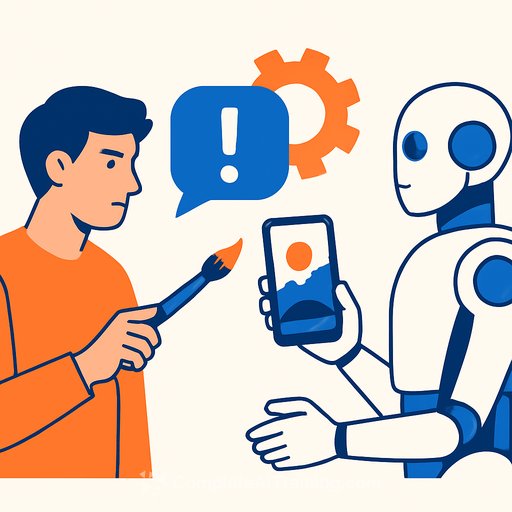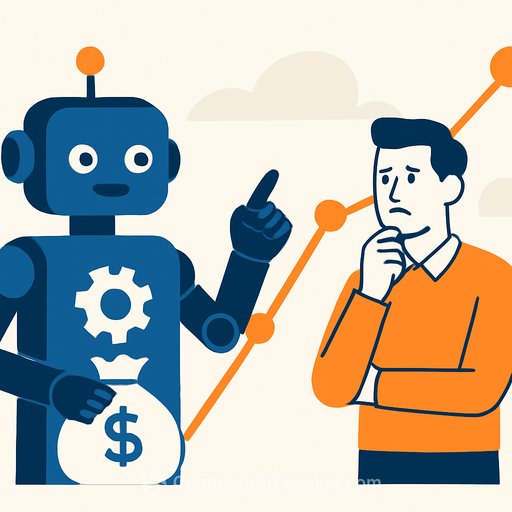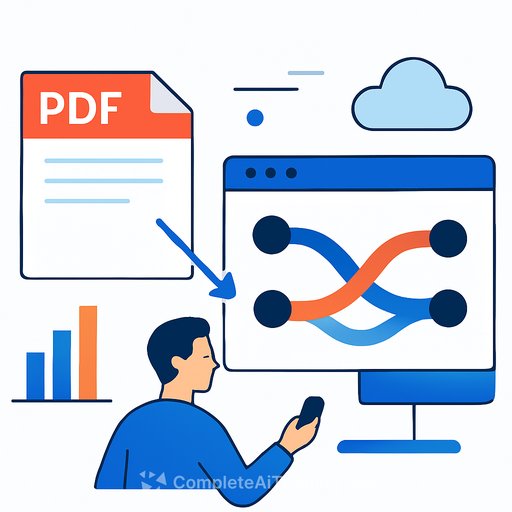Vibe Coding: The Intuitive Shortcut to Better AI
Vibe coding has moved from a meme to a method. It's the practice of writing prompts that capture intent, tone, and context-so models deliver what you meant, not just what you typed.
Social posts from figures like "God of Prompt" popularized the idea of "earning a metaphorical PhD in vibe coding." Behind the humor is a serious shift: people are getting better results with fewer rules and more intent.
Why this matters for creatives, IT, and developers
Large language models now respond well to natural phrasing and vibe-centric directives. That means faster drafts, cleaner scaffolds, and fewer rigid templates.
Industry signals back this up: a TechCrunch piece noted prompt engineering moving from niche to baseline skill, and a Gartner survey found 70% of AI pros think intuitive prompting can boost model efficiency by up to 40%. LinkedIn data in October 2025 also showed a 150% rise in prompt engineering job posts year over year.
How vibe coding works (in practice)
Modern models read more than keywords. Updates across major systems, including GPT series improvements in mid-2025 and Bard enhancements in August 2025, point to vibe-aware behavior that interprets emotion, tone, and loose context without strict syntax.
For you, that means you can specify "confident, minimal, no fluff" or "playful, metaphor-light, 2 paragraphs" and get closer on the first pass. Developers can add constraints like "TypeScript, functional style, 80% test coverage hints" while keeping the request conversational.
Business impact you can measure
Enterprises report real gains. A July 2025 Deloitte study tied intuitive prompting to a 25% productivity lift on coding tasks, adding up to large cost savings at scale.
Demand is rising for training and enablement. Platforms like Coursera saw enrollments in prompt engineering surge by 200% by September 2025. Vendors are productizing this: Anthropic introduced premium vibe-optimized code features, and Microsoft's Copilot built in vibe capabilities, reaching a reported 35% market share for AI-assisted development (IDC, Q2 2025).
Compliance is catching up. The EU's AI Act (effective August 2025) requires transparency in prompt methods, and a PwC report warned of penalties up to 4% of global revenue for systems that miss the mark on documentation and bias controls. You'll need clear records of how prompts are built and used.
Analysts expect the services market tied to vibe coding to grow to $50B by 2030 (McKinsey). Bloomberg projected 40% business adoption by 2026.
Technical notes (brief and useful)
Under the hood, vibe coding leans on transformer models fine-tuned to interpret subjective cues. An arXiv paper from September 2025 reported 30% accuracy gains in code generation using vibe-centric datasets.
Meta's Llama 3 (July 2025) added multimodal vibe analysis-merging text and emotional signals. To offset data scarcity, an MIT study (August 2025) showed synthetic augmentation cutting errors by 20%. On performance, IBM benchmarks (June 2025) suggested edge deployments can reduce latency by 50%. Forrester predicted quantum AI could push this even further by 2027.
A simple playbook to get started
- Define house vibes: write a 5-10 line style sheet (tone, length, constraints, audience). Treat it like a brand guide for prompts.
- Create a prompt library: collect best performers with inputs/outputs and when to use them. Version them like code.
- Use few-shot patterns: include 1-3 examples that match tone, structure, and edge cases.
- Add guardrails: state what to avoid (e.g., "no hype, no clichés, cite assumptions, provide code comments").
- Set evaluation: track quality with A/B prompts, automated tests, and human review criteria.
- Document for compliance: log prompts, rationale, constraints, and bias checks. Keep an audit trail.
Templates you can copy
- Creative brief prompt: "Write a [deliverable] that feels [tone adjectives], for [audience], with [constraints]. Include [sections]. Avoid [list]. 2-3 paragraphs. End with a clear CTA."
- Dev scaffold prompt: "Generate [language] code for [goal]. Style: [paradigm]. Include tests and inline comments. Cite assumptions. Provide step-by-step run instructions. Keep functions under 40 lines."
- Refinement prompt: "Compare Draft A and Draft B for [criteria]. Merge the strongest parts. Keep the vibe: [tone]. Output only the final version."
Team by team: where to apply it
- Design and content: moodboards → "vibe boards." Feed descriptors, brand pillars, and reference snippets to guide visual/text outputs.
- Engineering: use vibe prompts for scaffolding, tests, refactors, and docstrings. Pair with static analysis and linters.
- Product and PMO: convert PRDs and research into consistent briefs, user stories, and release notes with the same tone and constraints.
Metrics that keep you honest
- Time to first usable draft
- Revision cycles per task
- Code review acceptance rate
- Hallucination/defect rate
- Latency and cost per accepted output
- Compliance coverage: percentage of prompts with documentation and bias checks
Risks and how to handle them
- Tonal bias: vibes can exclude. Run bias audits on tone and persona. Offer neutral variants.
- Overfitting to style: keep multiple presets (formal, concise, conversational) and rotate tests.
- Compliance gaps: log prompts, constraints, and decision trails. Make "prompt provenance" a habit.
- Synthetic data gotchas: validate with human review and unit tests before production use.
Where training fits
Teams move faster when they share the same mental models for prompting, evaluation, and audit trails. If you need structured paths for roles and skills, explore focused learning tracks and certifications.
Prompt engineering resources * Courses by job role
FAQ
What is vibe coding in AI?
It's an instinctive approach to prompt engineering. You express the mood, intent, and constraints of what you want, and the model aligns outputs to that vibe for code, content, or analysis.
How can businesses implement vibe coding?
Train teams on prompt patterns, build a shared library, and choose platforms with vibe-sensitive features. Use iterative testing, track quality metrics, and document prompts for compliance and bias audits.
Your membership also unlocks:










